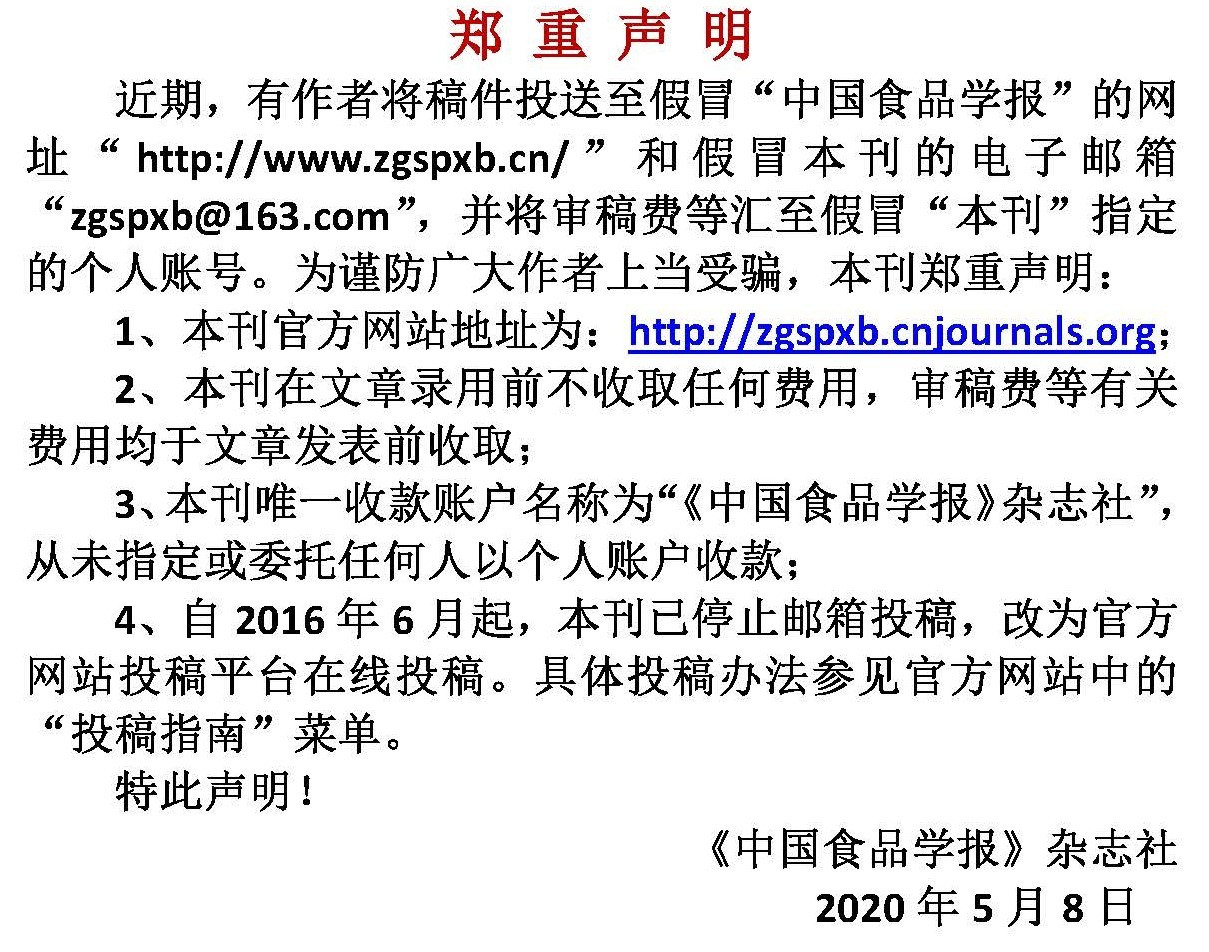高静压协同酸水解促淀粉颗粒纳米晶体化
作者:
作者单位:
(内蒙古工业大学化工学院 呼和浩特 010000)
作者简介:
通讯作者:
中图分类号:
基金项目:
内蒙古自治区基本科研项目(JY20230106);国家自然科学基金项目(21466027)
High Static Pressure Synergistic Acid Hydrolysis Promotes the Nanocrystallization of Starch Granules
Author:
Affiliation:
(School of Chemical Engineering, Inner Mongolia University of Technology, Hohhot 010000)
Fund Project:
引用本文
李晶晶,张甜甜,佟岳,刘培玲.高静压协同酸水解促淀粉颗粒纳米晶体化[J].中国食品学报,2024,24(12):57-68
复制分享
文章指标
- 点击次数:
- 下载次数:
- HTML阅读次数:
历史
- 收稿日期:2023-12-21
- 最后修改日期:
- 录用日期:
- 在线发布日期: 2025-01-23
- 出版日期:
文章二维码

版权所有 :《中国食品学报》杂志社 京ICP备09084417号-4
地址 :北京市海淀区阜成路北三街8号9层 邮政编码 :100048
电话 :010-65223596 65265375 电子邮箱 :chinaspxb@vip.163.com
技术支持:北京勤云科技发展有限公司
地址 :北京市海淀区阜成路北三街8号9层 邮政编码 :100048
电话 :010-65223596 65265375 电子邮箱 :chinaspxb@vip.163.com
技术支持:北京勤云科技发展有限公司
